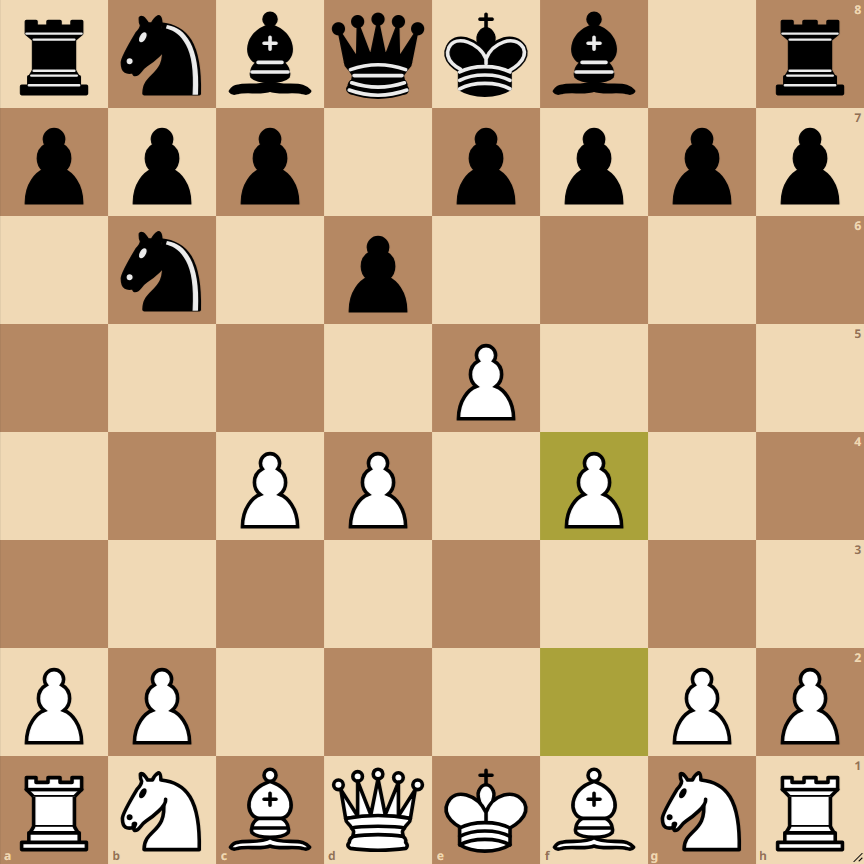How to Play the Alekhine Defense Four Pawns Attack
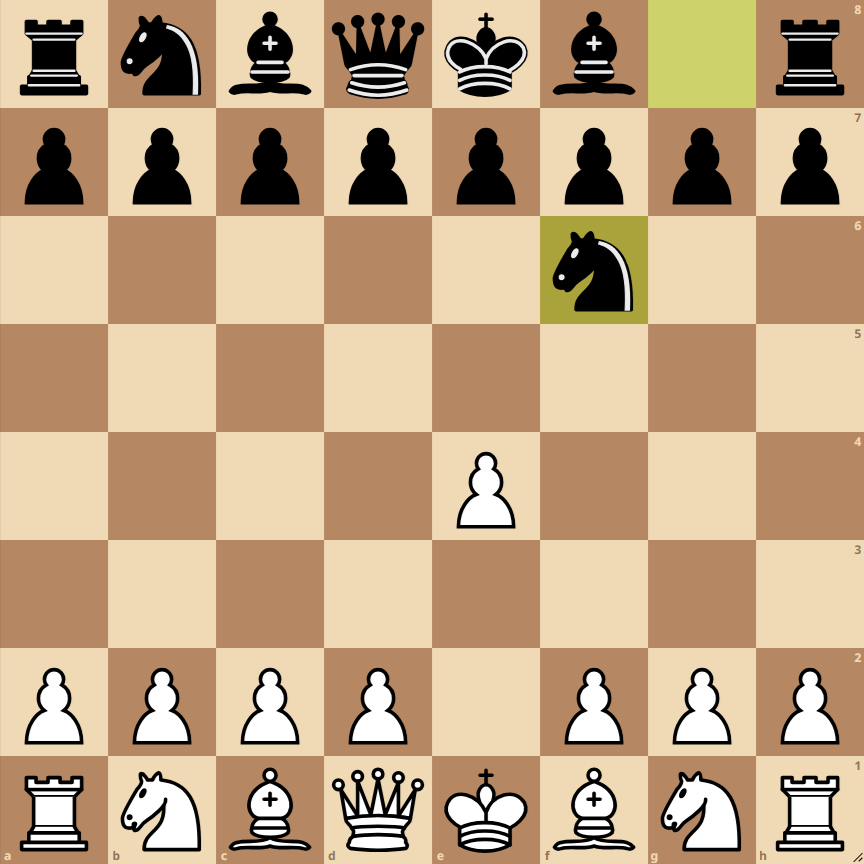
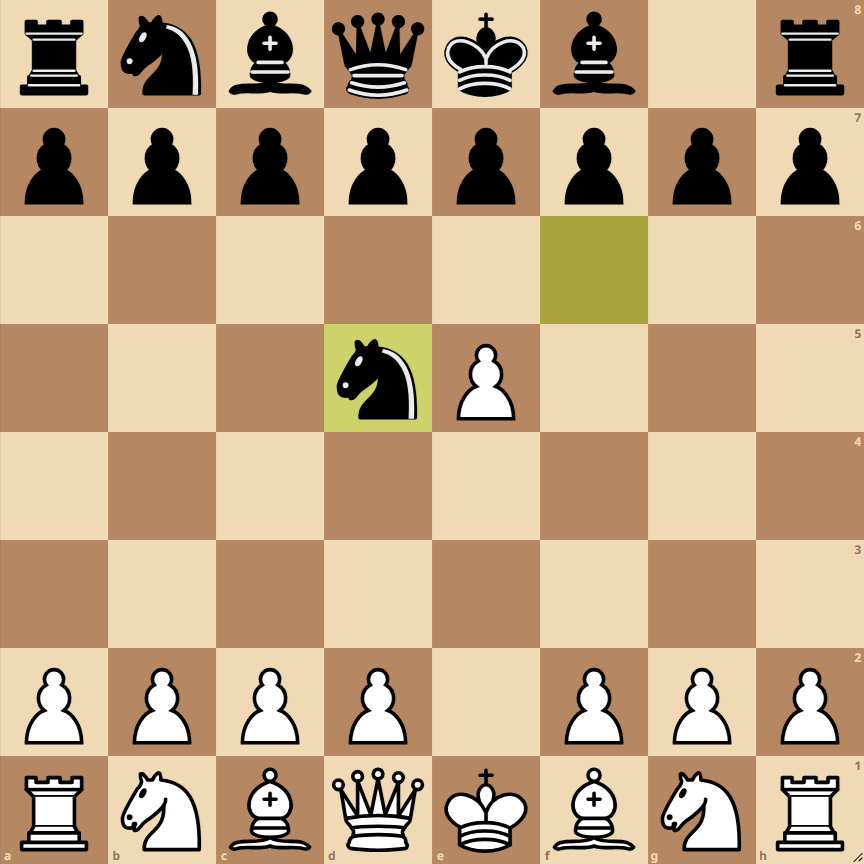
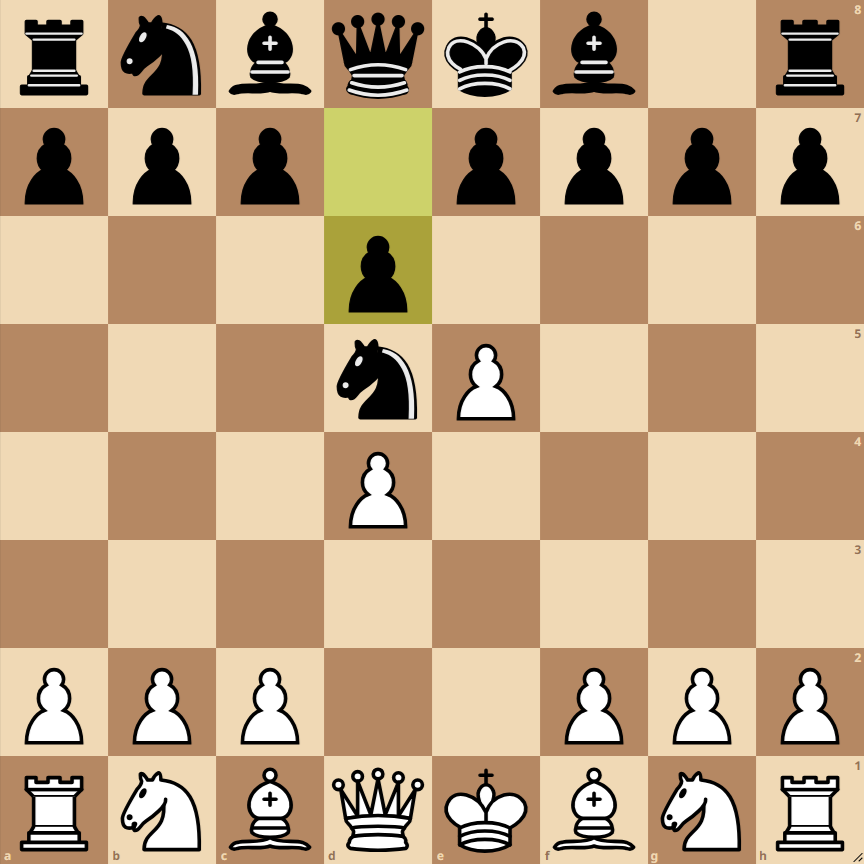
The Alekhine Defense, Four Pawns Attack, is an aggressive chess opening characterized by a rapid advance of white pawns in the center and on the king’s side. Below are the main moves:
- 1. e4: White opens with the king’s pawn, controlling the center and preparing the development of minor pieces.
- 1… Nf6: Black responds with the knight to f6, attacking the pawn on e4 and marking the start of the Alekhine Defense.
- 2. e5: White advances their pawn, displacing the black knight and gaining space in the center.
- 2… Nd5: The black knight retreats to d5, maintaining pressure in the center.
- 3. d4: White reinforces their center with another pawn advance.
- 3… d6: Black plays d6, preparing to undermine the white center.
- 4. c4: White expands their influence in the center, pressuring the black knight on d5.
- 4… Nb6: The black knight retreats to b6, freeing the d-file for black’s major pieces.
- 5. f4: White continues their expansion on the king’s side, preparing for a possible attack.
Variants of the Alekhine Defense Four Pawns Attack
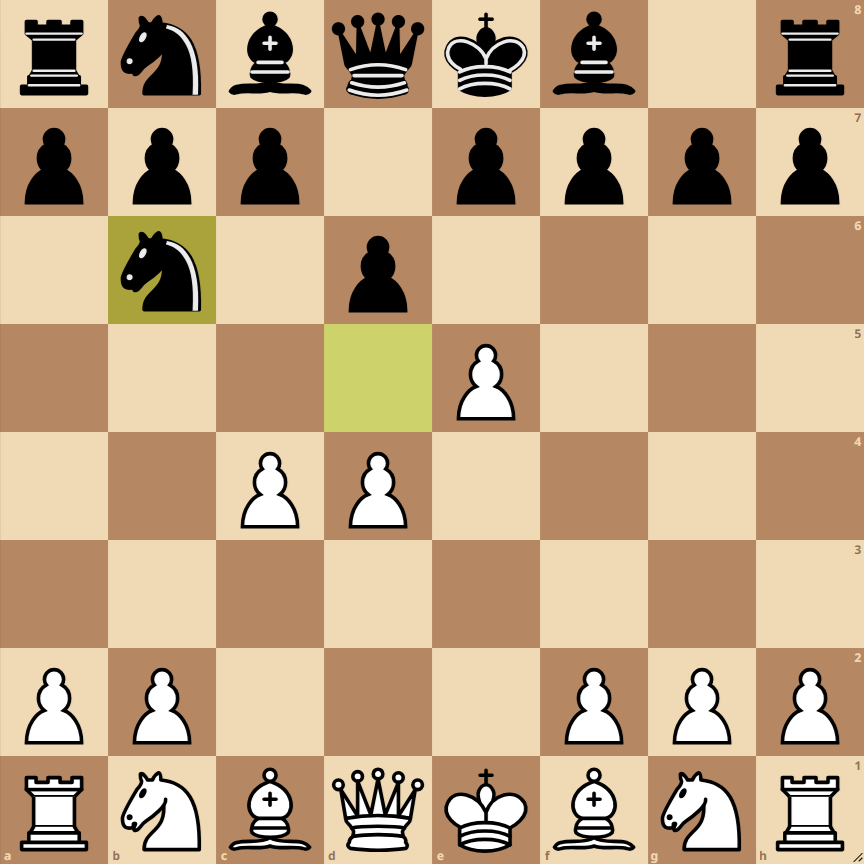
There are various variants in the Alekhine Defense Four Pawns Attack, each with its own ideas and strategic plans:
Variation 5… g6
Black aims to fianchetto their king’s bishop, preparing for a long castling and counterattacking in the center.
Variation 5… e6
This move prepares the development of the black queen’s bishop and can lead to the …d5 breakthrough, challenging the white center.
Variation 5… Bg4
With Bg4, black places their bishop in an active position, pressuring the knight on f3 and seeking piece exchanges to alleviate pressure in the center.
Opening: Alekhine Defense Four Pawns Attack
Moves:
- 1. e4 Nf6
- 2. e5 Nd5
- 3. d4 d6
- 4. c4 Nb6
- 5. f4
In the current position of the Alekhine Defense Four Pawns Attack, white has established significant central space dominance, while black seeks to counter this extended center.
Strategy and Tactics for White:
- Central Expansion: White has advanced four pawns in the center and the king’s side, creating a solid and ambitious pawn structure. The goal is to control the center and limit black’s options.
- Development of Pieces: Next, white should focus on developing their minor pieces (bishop and knight) and castling, preferably on the kingside, to secure the king’s safety.
- King’s Side Attack: With future pawn advances on the kingside (g4 and h4), white can initiate a direct attack on the black king if it hasn’t castled yet or weaken the black kingside pawn structure.
Strategy and Tactics for Black:
- Counterattack in the Center: Black may consider moves like dxe5 or Bf5 to undermine the white central pawn structure and gain activity for their pieces.
- dxe5: This move opens lines and can help develop other pieces, especially the dark-squared bishop.
- Bf5: Develops a piece, attacks the weak pawn on c4, and exerts pressure on the white center.
- King’s Safety and Development: It’s crucial for black to rapidly develop their pieces and consider castling. Long castling might be an option, depending on how the position evolves.
- Play on the Queen’s Side: With the knight on b6, black has influence on the queenside and can look for opportunities to counterattack, especially if white decides to launch an attack on the kingside.
Next Best Moves:
For White, the development of minor pieces (Nc4, Nf3) and castling are crucial. Maintaining tension in the center and preparing a possible kingside pawn advance would be an aggressive strategy.
For Black, dxe5, Bf5, and g6 are viable options:
- dxe5: Aims to challenge the white center.
- Bf5: Creates activity and attacks the weak pawn on c4.
- g6: Prepares fianchetto of the dark-squared bishop, seeking to strengthen control of the center and the long diagonal.
In summary, the current position is dynamic and offers both players the opportunity to play aggressively or seek a more positional game. White enjoys spatial advantage, while black looks for tactical opportunities and counterplay in the center and the queenside.

